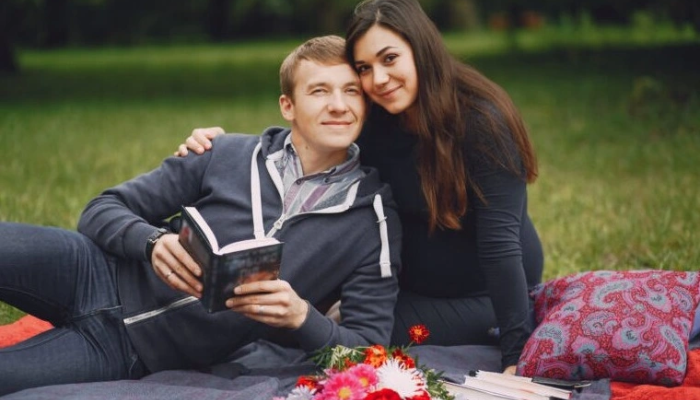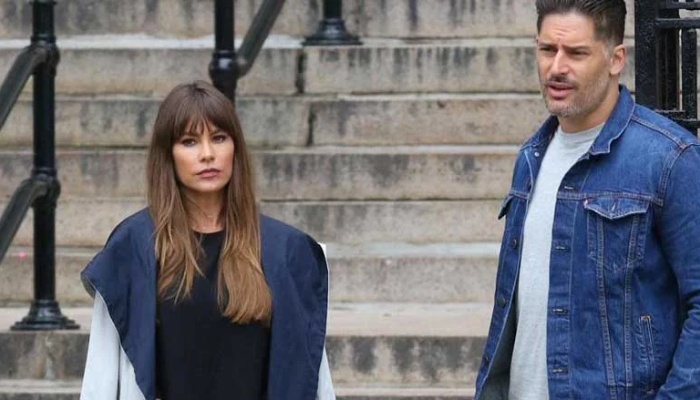Yuriana Castillo Torres is a name that echoes through the dark corridors of narco history. Often overshadowed by her infamous partner, José Rodrigo Aréchiga Gamboa (better known as El Chino Ántrax), Yuriana’s life was a complex fusion of glamour, danger, and tragedy. Her story is a prism through which we may glimpse the enticing yet perilous world of cartel culture, the roles women play in that realm, and the human costs hidden behind the headlines.
In this deep-dive article, we explore five major facets of Yuriana’s life—from early days to lasting legacy—and conclude with ten frequently asked questions to further illuminate her enigmatic path.
Early Life & Personal Background
Though much of the early life of Yuriana Castillo Torres remains shrouded in secrecy, piecing together her origins helps us contextualize her later decisions and alliances. Some sources suggest she was born in Sinaloa, Mexico, possibly in 1990, while others hint at a slightly earlier birth year. Regardless of the exact date, it is clear her upbringing unfolded in the shadow of cartel-dominated terrain in Sinaloa—a region infamous as one of Mexico’s narco strongholds.
Growing up amid pervasive cartel influence often leaves its unmistakable mark. In Yuriana’s case, there is little public record of her formal education, but her subsequent persona suggests she honed traits like resourcefulness, social acuity, and adaptability. She was often described as intelligent and charismatic, able to navigate dangerous social milieus. Her real family background—parents, siblings, early childhood—remains largely unknown in public sources, which fuels the mystique around her.
One recurring theme in accounts of her origin is how environment shapes destiny. As a young woman in Sinaloa’s cartel culture, the lines between personal choice, survival, and coercion could easily blur. Yuriana’s early life was thus foundational for understanding how she later became entwined with narco power, glamour, and peril.
Rise to Notoriety: Modeling, Buchona Culture & Visibility
Yuriana’s ascent into public consciousness aligns closely with the rise of buchona culture—a subculture tied to the glamorized lifestyles of women associated with drug cartel realms. The buchonas often display luxury fashion, high-end beauty, social media presence, and a code of aesthetic excess. Yuriana embodied many of these traits, becoming not only a model but a visible persona within that cultural current.
Her modeling career may not have been conventional by entertainment industry standards, but within narco-associated show business, she stood out. Over time, her allure, confidence, and ties to powerful figures helped amplify her visibility. Photos of her circulated widely online, where she came to represent the glamorous side of narco life.
But visibility in that sector carried inherent danger. The same networks that uplifted her also exposed her to volatility. Her partnership with El Chino Ántrax catapulted her further into the crosshairs of cartel politics, rumors, and law enforcement attention. While she leveraged aesthetic appeal and social image, that glamour sat always on a razor’s edge—one mistake or betrayal could (and eventually did) have dire consequences.
Thus, Yuriana’s rise weaves together ambition, societal currents, and perilous affiliations. She became a symbol of a lifestyle many observe with fascination and trepidation.
Relationship with El Chino Ántrax & Cartel Ties
Central to Yuriana Castillo Torres’s narrative is her connection to José Rodrigo Aréchiga Gamboa, better known by the alias El Chino Ántrax. He was a high-ranking enforcer and operator within the Sinaloa Cartel, particularly linked with Los Ántrax, a feared armed wing.
The specifics of how their paths first crossed remain hazy, but the relationship evolved to be deeply entwined both personally and operationally. Some accounts assert they had two children together. Yuriana is often described not simply as a partner, but as someone who maneuvered within the shadow networks of the cartel—providing support, coordinating logistics, and sustaining continuity while her partner faced law enforcement pressure.
El Chino Ántrax himself had a dramatic arc: in December 2013, he was arrested at Amsterdam’s Schiphol Airport while using a false identity. He was eventually extradited and sentenced in the U.S. to terms related to drug trafficking. After his release and house arrest, he escaped custody in 2020, and was later found murdered alongside his sister and brother-in-law—a brutal end that mirrored the violent world he inhabited.
Yuriana’s link with him placed her in extreme proximity to cartel power. That bond lent her privilege, protection, and notoriety—but also vulnerability. In cartel dynamics, alliances shift, rivalries erupt, and trust is fragile. Her position as a female intimate partner offered both influence and hazard.
The Tragic End: Kidnapping, Death & Investigation
One of the most haunting chapters of Yuriana Castillo Torres’s story is her abduction and brutal death. On or around May 6 or 7, 2014, in Culiacán, Sinaloa, she was reported kidnapped and later found dead in a vacant lot nearby. Evidence suggested extreme violence: her hands and legs were bound, her skull showed trauma, and marks indicated she may have been tortured.
Autopsy reports noted suffocation by hanging as the cause of death. She was discovered wrapped in white sheets in the Lomas de Guadalupe neighborhood. The discovery was made in the early morning hours, and the body was later positively identified by her family at forensic facilities.
The investigation into her murder remains clouded by ambiguity. No publicly confirmed arrests or charges have emerged directly tied to her death. Some theories propose mistaken identity—others argue that her murder was an intentional message or retaliation within cartel conflicts.
The lack of clarity about motive, suspect identities, and the exact sequence of events preserves this tragedy in mythic shadows. Her case remains a potent reminder of how many cartel-era killings remain unresolved or partly obscured by fear, silence, and corruption.
Legacy, Symbolism & Media Representation
Despite her short life, Yuriana Castillo Torres has endured in public memory as an icon, a cautionary tale, and a cultural symbol. In narco lore and social media, she is often idolized as a glamorous figure caught in the gravitational forces of cartel power. Her life is frequently romanticized and mythologized—photos of her dressed in luxury, images of her in cowboy boots or extravagant dresses, and narratives about her as a “narco queen” continue to circulate.
Yet beyond fascination, her story sparkles with deeper questions. What does it mean for women drawn into narco culture? How much agency did she truly possess? Some argue she embodies a complex paradox: a woman both empowered (through visibility and alliance) and constrained (by the violent systems she inhabited). Her narrative also confronts us with the lethal risks attendant in glamorizing cartel life—she became not merely a bystander but a casualty of those very systems.
In media, her story is retold in true-crime pieces, documentaries, social commentary blogs, and cartel lore discussions. She is sometimes compared to celebrity archetypes such as the “Mexican Kardashian lookalike,” a way of underscoring the jarring collision of beauty, fame, and violence. On social platforms, memorial accounts continue to post tributes, quotes, and speculative threads about what “really happened.”
Her legacy forces a reckoning with the lives lost behind cartel headlines—often unreported, uninvestigated, and unmemorialized. Yuriana’s story becomes a prism: part tragedy, part myth, part social warning.
Conclusion
The story of Yuriana Castillo Torres is more than a sensational headline—it is a human story of ambition, connection, danger, and ultimate tragedy. From her obscure beginnings in Sinaloa, she climbed social ladders defined by beauty, charisma, and proximity to power. Her alliance with El Chino Ántrax thrust her into the vortex of cartel dynamics, where wealth, status, and survival were perpetually in tension. Her murder left haunting gaps—questions of motive, culpability, and identity unresolved.
And yet, her life continues to echo in media, memory, and social imagination. She symbolizes the fragile boundary between visibility and vulnerability, glamour and terror, agency and enchantment within the narco world. In exploring her biography, we confront the lure and the danger of cartels, but also the often-unseen human costs borne by those drawn in.
May her story remind us that behind every sensational headline lie real lives tangled in forces far greater than they ever intended.
Frequently Asked Questions
- Who was Yuriana Castillo Torres?
Yuriana Castillo Torres was a model and public figure associated with buchona culture in Mexico and known for her romantic and operational ties with El Chino Ántrax, a high-ranking member of the Sinaloa Cartel. - When and where was she born?
Many sources list her birthdate as October 6, 1990, in Sinaloa, Mexico, though some variation exists. - What is buchona culture and how does she relate?
Buchona culture is a subcultural aesthetic linked to women associated with narco lifestyles—marked by flamboyant fashion, visible wealth, and public persona. Yuriana is considered one of its emblematic figures. - Who was El Chino Ántrax and what was his connection to Yuriana?
José Rodrigo Aréchiga Gamboa, El Chino Ántrax, was a powerful enforcer in the Sinaloa Cartel leading the armed faction Los Ántrax. Yuriana was his partner and collaborator, and they reportedly had children together. - How did Yuriana die?
She was kidnapped in May 2014 and found murdered in Culiacán, with signs of binding, trauma, and suffocation by hanging. - Were any suspects ever arrested?
To date, no publicly confirmed arrests have been reported in connection with her murder. - What theories exist about the motive?
Theories include mistaken identity, retaliation in cartel politics, or a targeted message within criminal networks. - Did she have children?
Yes, she reportedly had children with El Chino Ántrax, though their current status remains private. - How is Yuriana remembered today?
She is memorialized in social media fan pages, forums on narco culture, and true-crime media. Her imagery and story continue to provoke fascination and debate. - What broader lessons or warnings arise from her story?
Her life illustrates how glamour and power can hide lethal danger, the roles women may inhabit in criminal networks, and the tragic human costs masked behind the sensational narratives of cartel life.










